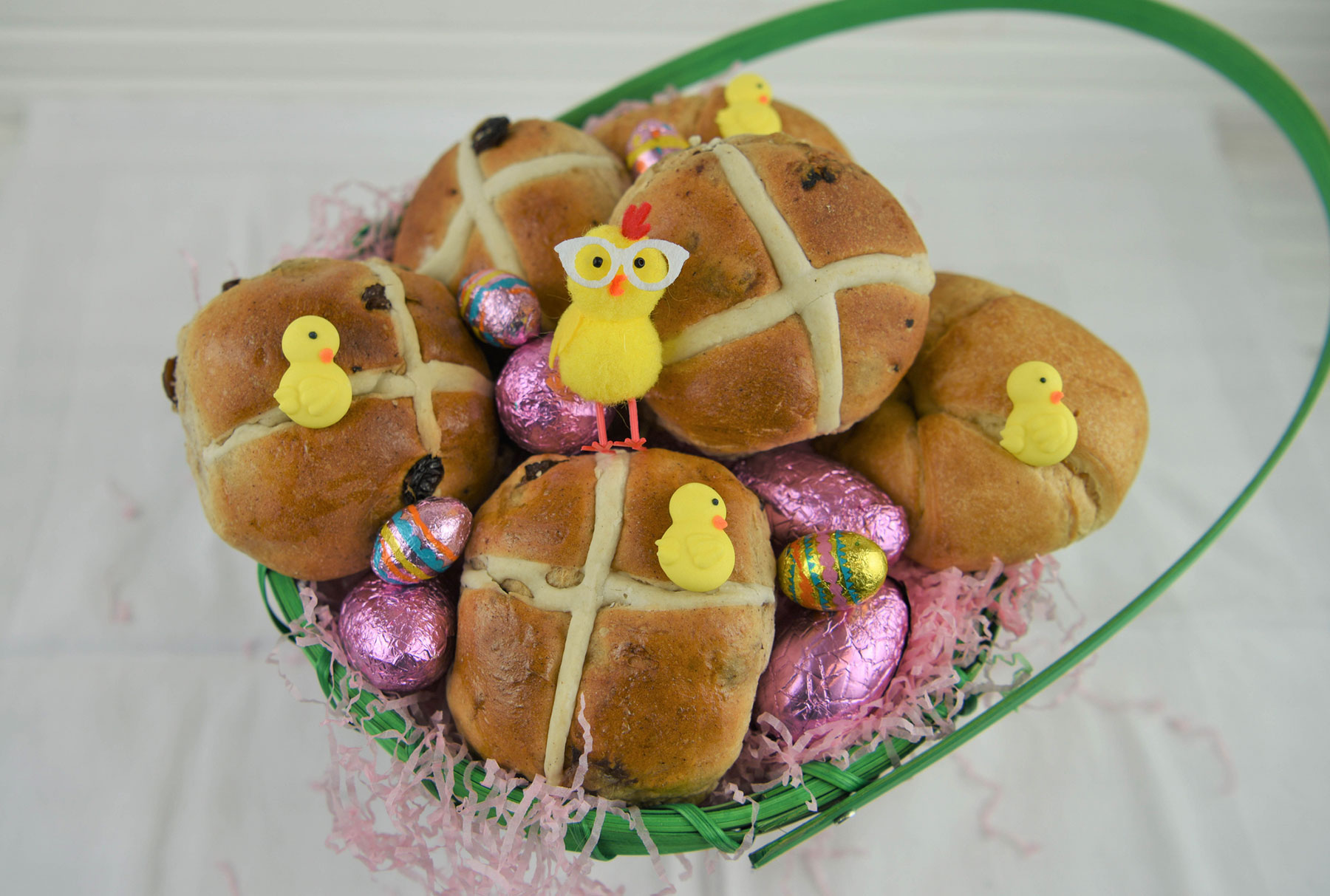Easter can be an exciting time for both adults and children. While we prepare for Easter, it is essential to keep an eye on potential dangers for your furry friend.
Chocolate
Chocolate contains caffeine and theobromine (a chemical compound found in the cacao plant), which can be fatal to our pets. It is important to keep chocolate out of reach this Easter. If you are hiding chocolate eggs, keep your pets in a safe location away from the hunt and record where you have hidden the eggs.
If you do suspect your pet may have eaten some chocolate, call us straight away, as symptoms can take up to three hours to show.
Some symptoms to look out for include:
- Vomiting,
- Diarrhoea,
- Increased urination,
- Restlessness,
- Hyperactivity,
- Twitching,
- And in severe cases, seizures.
Hot cross buns
Hot cross buns are another treat to keep out of reach of our furry friends. Some hot cross buns contain chocolate which can be fatal to our pets. They can also contain raisins. Raisins, grapes, sultanas and currants have been shown to cause acute kidney failure in dogs. The exact reason is still not identified; therefore, we cannot determine how much is toxic or which pets will be affected. Some pets can eat a few grapes with no ill effects, whereas others may become severely ill with the same amount.
It is always better to be on the safe side; if you suspect your pet has eaten any, please call us immediately.
Initial signs can include:
- Vomiting,
- Diarrhoea.
Noises and crowds
New visitors, noises and smells can sometimes cause anxiety for your pet. To help minimise your pet’s stress;
- Create a calm, quiet spot for your pet away from the noise.
- Exercise your pet before any guests arrive.
Decorations
Small and cute Easter decorations could become choking hazards for your pet or, if broken, can cause cuts to their mouths. Ensure all decorations are out of your pet’s reach or too big for them to fit in their mouths. If your pet has swallowed or eaten any decorations, please call our team.
Flowers
Some flowers are toxic to our pets. If you decorate with flowers or receive them as gifts, place them in a location your pet can’t get to. Some flowers and plants to look out for include:
| Common Poisonous House Plants | ||
| Common Name | Botanical Name | Poisonous Part |
| Bird of Paradise | Strelizia regirae | Fruit, seeds |
| Boston Ivy | Parthenocissus quinquefolia | All parts |
| Caladium | Caladium | All parts |
| Creeping Charlie | Glecoma hederacea | All parts |
| Dumbcane | Dieffenbachia | All parts |
| Emerald Duke | Philodendron hastatum | All parts |
| Glacier Ivy | Hedera glacier | Leaves, berries |
| Heartleaf | Philadendron cordatum | All parts |
| English Ivy | Hedera helix | Leaves, berries |
| Lily/Liliaceae Family | Lilium | All parts |
| Marble Queen | Scindapsus aureus | All parts |
| Majesty | Philodendron hastatum | All parts |
| Nephthytis, Arrowhead Vine | Synogonium podophyllum albolineatum | All parts |
| Parlor Ivy | Philodendron cordatum | All parts |
| Pothos | Scindapsus aureus | All parts |
| Red Princess | Philodendron hastatum | All parts |
| Saddleleaf | Philodendron selloum | All parts |
| Split leaf Philodendron | Monstera deliciosa | All parts |
| Umbrella Plant | Cyperus alternifolius | All parts |
| Common Poisonous Outdoor Plants | ||
| Common Name | Botanical Name | Poisonous Part |
| Apricot | Prunus ameniaca | Stem, bark, seed pits |
| Azalea | Rhododendron occidentale | All parts |
| Baneberry | Actaea Spicata | Berries, roots, foliage |
| Buchberry | Lantana | All parts |
| Castor Bean | Ricinus communis | Seeds, if chewed |
| Choke Cherry | Prunus virginica | Leaves, seed pits, stems, bark |
| Daffodil | Narcissus | Bulbs |
| Daphne | Daphne mezereum | Berries, bark, leaves |
| Foxglove | Digitalis purpura | Leaves, seeds, flowers |
| Hemlock | Conium maculatum | All parts, root and root stalk |
| Hens-and-Chicks | Lantana | All parts |
| Hyacinth | Hyacinthus orientalis | Bulbs, leaves, flowers |
| Hydrangea | Hydrangea macrophylla | Leaves, buds |
| Jerusalem Cherry | Solanim pseudocapscium | All parts, unripe fruit |
| Jimson Weed | Datura stramonium | All parts |
| Jonquil | Narcissus | Bulbs |
| Lily-of-the-Valley | Convallaria majalis | All parts |
| Mandrake | Podophyllum peltatum | Roots, foliage, unripe fruit |
| Mistletoe | Phoradendron Flavescens | Berries |
| Morning Glory | Ipomoea violaces | Seeds |
| Nightshade | Atropa belladonna | All parts |
| Oleander | Norium Oleander | All parts, including dried leaves |
| Poinsettia | Euphorbia pulcherrima | Leaves, flowers |
| Pokeweed, Inkberry | Phytolacca americana | All parts |
| Red Sage | Lantana camara | Green berries |
| Rhododendron | Rhododendron | All parts |
| Rhubarb | Rheum raponticum | Leaves |
| Sweet Pea | Lathyrus odoratus | Seeds, pods |
| Tulip | Tulipa | Bulbs |
| Wisteria | Wisteria | Seeds, pods |
| Yew | Taxus | Needles, bark, seeds |
If your pet has nibbled on any of your plants, please take a photo of the plant for later identification and reference, and call our team immediately.
For more Easter tips, please call us on (02) 9436 1213 or book an appointment online! We hope you enjoy a lovely long weekend.



